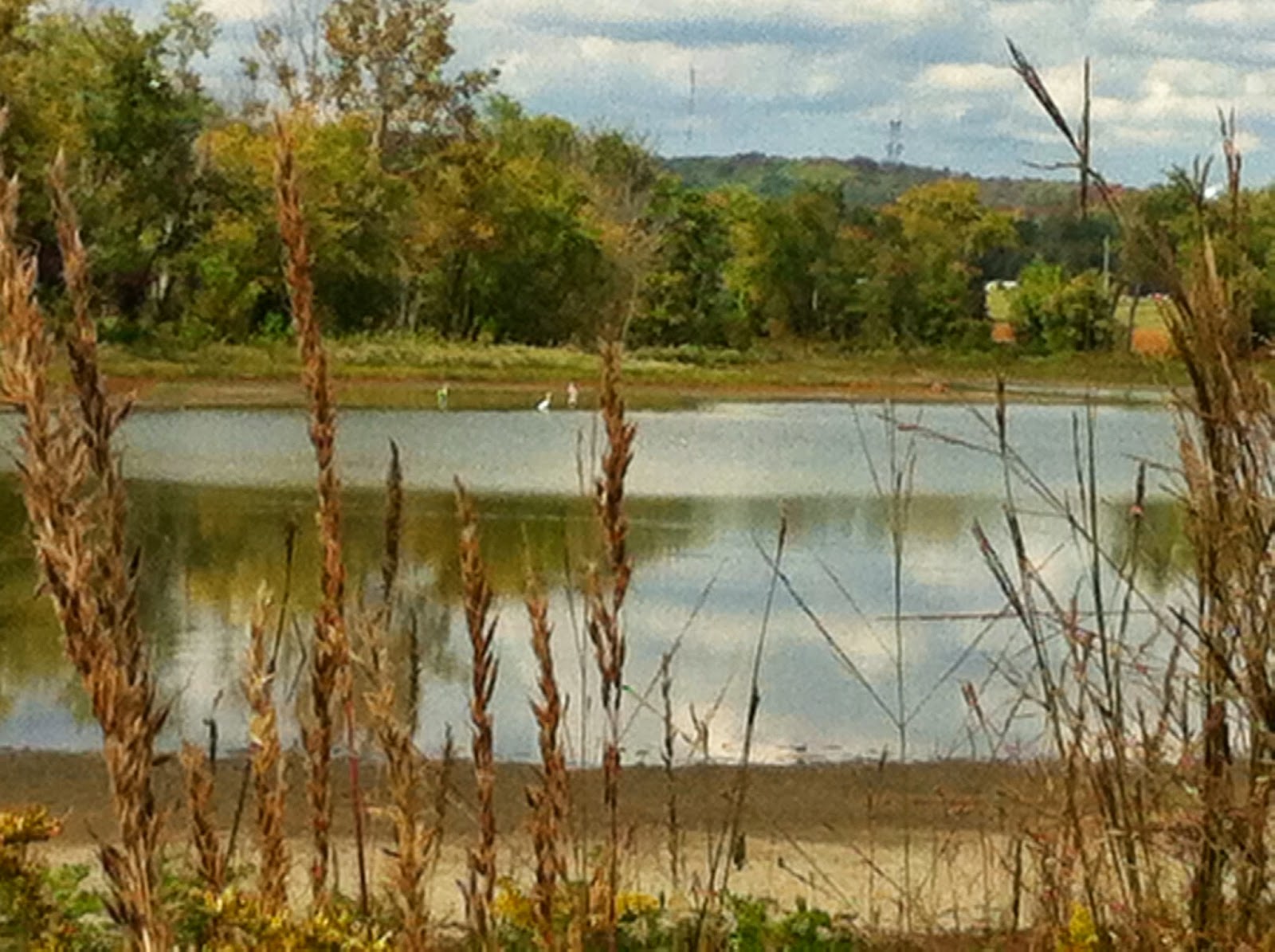Last weekend I went to an old favorite, Miami Whitewater Forest, one of the Hamilton County Parks in SW Ohio.
I spent quite a few hours there last summer volunteering to help clean up beaver dams... or rather clear them out of the culverts that connected the series of lakes in the park. It was a ridiculously hard job! My hands were covered in blisters and as fast as we cleared them out during the day, the beavers would be back at night building them up. I was told that it was in a beaver's nature to stop water from flowing. They don't live in the dams, they build "lodges" in other areas of the lake. They just build the dams because they want their water to be still. Anytime the water starts to move, they get busy! So why not just let the dams stay in place and let the beavers have their still pond? Well, still water means stagnant, buggy water. Plus, when it rained, if the culverts were blocked, the trails flooded. Opps, got side tracked, this is not a post about beaver dams, it's about fall hiking and the beautiful areas in this Tri-state region.
I just love it when the trail is so leaf covered you have to wonder if you're actually still on it. The trails at Miami Whitewater Forest are impeccably maintained. They have an army of volunteers that go out there every day to trim branches and pick up liter.
I thought the fungi covering this fallen tree trunk was amazing. The type of fungus pictured here is Violet Polypore... I think. I looked at a field guide printed from the USDA on Common Microfungi in Eastern Forests, and the picture they had in the book looked like this, so that's what I'm going with. Here's what I learned:
The Violet Polypore develops fruit bodies in thin, leathery layers of various colors with violet on the fruit body margin that breaks into teeth with age. It is often covered with green algal growth. You will find it covering dead trees. It grows from spring to fall and is inedible. It is one of the most common decay fungi in the US. So, there you have it. Just because it's common, covered in algae, and grows on dead trees, does not mean it cannot be breathtakingly beautiful.
The next Fabulous Fall hike I went on was to the Devou Mountain Bike Trails in Covington, KY. These trail were designed for mountain bikes but they welcome hikers and trail runners as well. They are single track, 16 inch wide trails that climb 400 feet in and around the hills on the south side of Devou Park. The trails are very new and still growing. Chad Irey, a local resident and outdoor enthusiast, petitioned the city to authorize the development of the trail system and, after three and a half year, got it! The trails are 100% volunteer built/donation funded. Ground breaking was in 2010 and they already have over ten miles of trails. They are supported by the Cincinnati Off Road Alliance and the Kentucky Mountain Bike Association and are said to be built to international mountain biking standards. Pretty cool thing to have in my back yard!
Ahhh... soon winter will be here and the beautiful reds, yellows, and browns will be covered with white snow!!!














